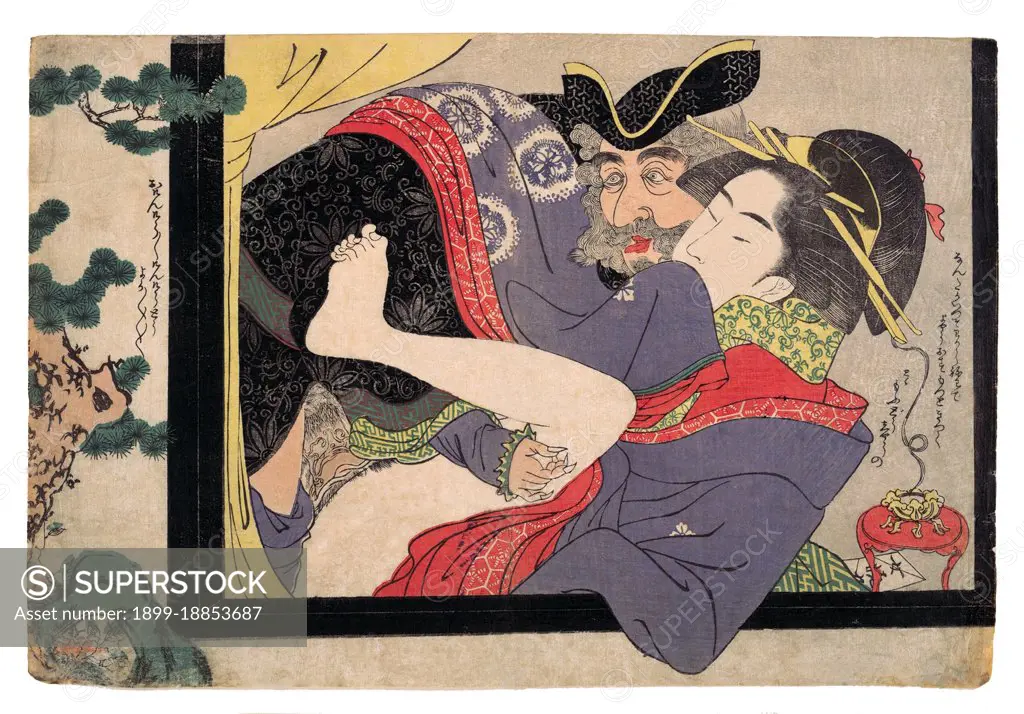Shunga () is a Japanese term for erotic art. Most shunga are a type of ukiyo-e, usually executed in woodblock print format. While rare, there are extant erotic painted handscrolls which predate the Ukiyo-e movement. Translated literally, the Japanese word shunga means picture of spring; 'spring' is a common euphemism for sex. The ukiyo-e movement as a whole sought to express an idealisation of contemporary urban life and appeal to the new chonin class. Following the aesthetics of everyday life, Edo period shunga varied widely in its depictions of sexuality. As a subset of ukiyo-e it was enjoyed by all social groups in the Edo period, despite being out of favour with the shogunate. Almost all ukiyo-e artists made shunga at some point in their careers, and it did not detract from their prestige as artists. Classifying shunga as a kind of medieval pornography can be misleading in this respect.
SuperStock offers millions of photos, videos, and stock assets to creatives around the world. This image of Shunga () is a Japanese term for erotic art. Most shunga are a type of ukiyo-e, usually executed in woodblock print format. While rare, there are extant erotic painted handscrolls which predate the Ukiyo-e movement. Translated literally, the Japanese word shunga means picture of spring; 'spring' is a common euphemism for sex. The ukiyo-e movement as a whole sought to express an idealisation of contemporary urban life and appeal to the new chonin class. Following the aesthetics of everyday life, Edo period shunga varied widely in its depictions of sexuality. As a subset of ukiyo-e it was enjoyed by all social groups in the Edo period, despite being out of favour with the shogunate. Almost all ukiyo-e artists made shunga at some point in their careers, and it did not detract from their prestige as artists. Classifying shunga as a kind of medieval pornography can be misleading in this respect. by Pictures from History/Universal Images is available for licensing today.
DETAILS
Image Number: 1899-18853687Rights ManagedCredit Line:Pictures from History/Universal Images/SuperStockCollection:Universal Images Contributor:Pictures from History Model Release:NoProperty Release:NoResolution:5000×3490
Free Research
Can't find the usage you need?
We're here to help!
Phone:+1 866 236 0087
Email: help@superstock.com
or fill out a Contact Form
Research / License Request Form
Can't find the usage you need?
We're here to help!
Phone:
or fill out a Contact Form
Research / License Request Form
Retouching Services
Our MediaMagnet division offers comprehensive retouching services at great rates. For a free quote, please send us an e-mail and we'll get back to you promptly.
Email: Retouching Service
Our MediaMagnet division offers comprehensive retouching services at great rates. For a free quote, please send us an e-mail and we'll get back to you promptly.
Email: Retouching Service
